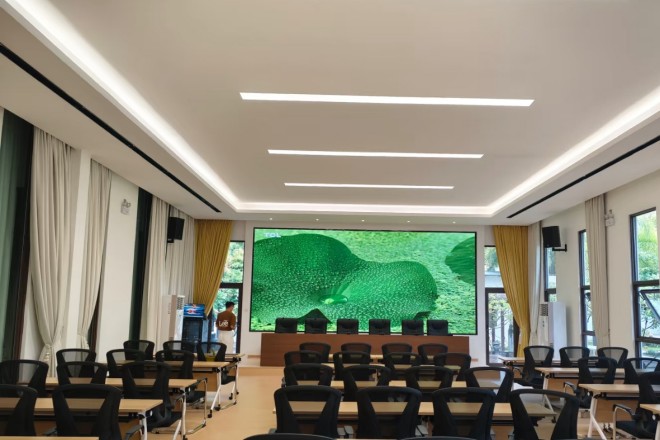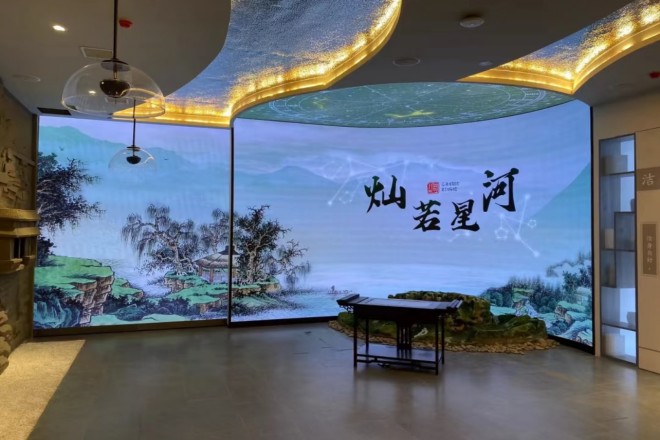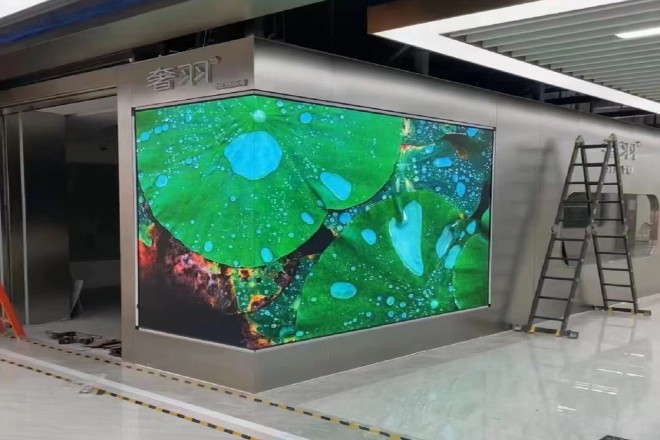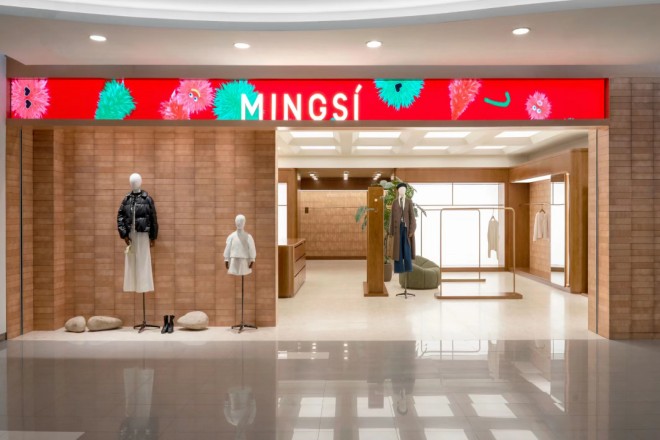介绍

LED显示屏 信息洪流无处不在,传递着各种各样的信息。面对众多选择,本文提供了关键参数、品牌、预算和使用环境的指南,以帮助您找到理想的LED显示屏。
1.考虑一下你想要什么样的显示效果。

在考虑想要的展示效果时,我们需要结合多种因素来做出最合适的选择,以下是针对您提出的每个因素的详细分析和建议:
1). 应用场景
1.1).室内使用:
会议室: 通常需要高解决,色彩精准的显示屏,清晰显示PPT、图表和文本信息。
展览 大厅:可能需要较大的屏幕面积来显示图像和视频内容,同时要求色彩鲜艳且亮度适中以适应不同的光线条件。
酒店 大堂及接待区: 屏幕尺寸和位置需考虑到顾客的视线高度和行走路径,确保信息容易被注意到。同时需要支持远程内容更新,帮助酒店管理者维护信息。
博物馆 和艺术画廊: 色彩还原度高,能够真实再现艺术品的色彩和细节。屏幕尺寸和布局应根据展览空间的大小和布局进行设计,保证观众舒适地观看。
其他室内环境,例如零售店,可能需要安装灵活且设计精美的显示器。
1.2).户外使用:
广告牌: 需要高亮度 和高对比度显示屏,确保即使在日光下也能清晰显示内容。
公共场所,例如火车站和 机场,可能需要更大的屏幕面积来吸引注意力,同时要求显示器耐用且抗风。
2). 显示内容
文字信息: 需要高分辨率显示器来确保文本清晰可读。
图形: 除了高分辨率之外,还需要准确的色彩来呈现图像中的细节和颜色。
视频内容: 需要支持高刷新率和流畅播放的显示器来确保视频内容无滞后和延迟。
3). 观看距离
特写观看: 例如,会议室的显示器需要较高的分辨率和较小的像素间距,以保证观众能清晰地看到每一个细节。
远距离观看: 例如户外广告牌需要更大的屏幕面积和更高的亮度,以保证在较远的距离也能清晰地看到内容。
4). 环境亮度
室内的: 通常不需要特别高的亮度,但需要准确的色彩和适中的对比度。
户外的: 需要高亮度显示屏来抵抗阳光直射,确保内容清晰可见。
5).防水防尘等级
室内的: 通常对防水防尘等级要求不特别高,但是要求显示器具有良好的散热性能和稳定性。
户外的: 需达到IP65及以上的防水防尘等级,保证显示屏在恶劣的天气条件下能正常工作。
2、了解LED显示屏的关键参数
LED显示屏的关键参数对其显示效果和用户体验至关重要。下面对这些关键参数进行详细解释:
1). 解析度:
LED显示屏分辨率是指屏幕图像的精度,也就是显示屏上能够显示的像素点的数量,通常用水平像素点数量×垂直像素点数量来表示。
分辨率越高,显示的画面越清晰,细节越丰富。 根据使用场景和预算选择合适的分辨率。
例如对于小型门店的广告展示来说,标清或者高清的分辨率可能就足够了;而对于家庭影院、游戏爱好者或者专业图像设计领域来说,4K或者更高的分辨率才能带来更好的视觉体验。
2). 刷新率:
刷新率是指屏幕每秒刷新图像的次数,通常单位为赫兹(Hz)。刷新率越高,画面显示越稳定流畅,视觉闪烁感越少,图像清晰度越高。
对于一般应用, 刷新率≥1920Hz即可满足需求;适用于高端应用,如现场体育赛事或专业影视制作, 刷新率≥3840Hz可带来更好的视觉体验。
3).屏幕尺寸:
屏幕尺寸是指LED显示屏的对角线长度,通常以英寸或毫米为单位。屏幕尺寸的选择直接影响观看效果和用户体验。 根据使用场景和观看距离选择合适的屏幕尺寸。
例如,在室内会议室中,较小的屏幕尺寸可能更适合近距离观看,而在户外广告牌中,较大的屏幕尺寸可以吸引更多的注意力。
4).亮度:
亮度是指LED屏幕发出的光线的强度,通常以尼特为单位。亮度越高,在强光下屏幕显示越清晰,保证内容的可见度。
室内LED显示屏的亮度通常在800-1500nits之间,而户外LED显示屏由于需要抵抗阳光的直射,亮度通常在3000-6000nits之间。
3、考虑预算的价格和LED显示屏的性价比

在考虑预算和LED显示屏的性价比时,有以下几点建议:
1). 预算明确
首先,你需要明确你的预算范围。LED显示屏的价格根据尺寸、分辨率、亮度、刷新率等参数而有所不同,所以你需要根据你的需求和预算来选择合适的产品。
2). 成本效益评估
- 比较不同的产品:
在预算范围内对比不同品牌、不同型号的LED显示屏的性能和价格,关注产品分辨率、刷新率、亮度、点间距等关键参数,以及产品口碑和用户评价。
- 考虑使用场景:
根据使用场景选择合适的LED显示屏,比如室内使用,可以选择亮度适中,分辨率较高的产品。
户外使用需要选择亮度高、防水防尘性能好的产品。
- 注重售后服务:
选择售后服务良好的品牌和产品,保证使用过程中遇到的问题能及时得到解决。
3).避免盲目追求高价
虽然高价位的产品往往意味着更高的性能、更好的质量,但并不意味着所有高价位的产品都适合您。
一味追求高价格,可能会导致预算超支,不一定能满足您的实际需求。因此,在选择LED显示屏时,请根据您的实际需求和预算来决定。
4). 推荐高性价比产品
下面给大家推荐几款性价比高的LED显示屏:
4.1).室内使用:
- 小间距LED显示屏:
如P1.25、P1.5等规格,价格相对较高,但显示效果极佳,适合对画质要求较高的场合。
- 经济型LED显示屏:
如P4、P5等规格,价格适中,可以满足一般的使用需求。
4.2). 户外使用:
- 高亮度LED显示屏:
选择亮度在3000-6000nits之间的产品,保证强光下也能清晰显示内容。
- 良好的防水防尘性能:
选择IP65或更高防护等级的产品,保证在恶劣环境下正常工作。
4、LED显示屏观看距离和尺寸的选择
LED显示屏观看距离和尺寸的选择确实需要根据具体的应用场景和观看需求来决定。以下是一些建议:
1). 观看距离与像素间距的关系
1.1).P4显示屏(点距4mm):
- 最佳观看距离:
大概4米到10米。在这个距离范围内,观众可以清晰分辨屏幕上的细节,例如文字和图像。
随着观看距离的增加,观众的视觉体验也会得到提升,但超过10米的距离,细节的可辨性可能会下降。
1.2). 其他像素间距的显示屏:
- P1 至 P3 显示:
这些显示器的点距较小,适合近距离观看。
例如P1.2-P1.5的LED屏幕适用于中型会议室,最佳观看距离约为1.5至3米。
P2.0-P2.5适用于大型展览空间,最佳观看距离在3至5米之间。
- P5及以上显示屏:
这些显示屏的点间距较大,适合远距离观看,例如户外广告牌或大型公共场所的显示屏,观众通常从远处观看,可以选择成本较低的大间距规格。
2). 筛网尺寸的选择
- 根据观看距离确定屏幕尺寸:
观看距离越近,需要的屏幕尺寸就越小;观看距离越远,需要的屏幕尺寸就越大。这是为了保证观众在任何距离都能清楚地看到屏幕上的内容。
3).考虑应用场景:
- 室内使用:
例如会议室、展览馆等,可根据房间的大小、布局来决定屏幕尺寸,一般来说,屏幕尺寸要足够大,让所有观看者都能清晰的看到屏幕上的内容。
- 户外使用:
比如广告牌、公共场所显示屏等,屏幕尺寸要足够大,才能吸引观众的注意力,同时还需要考虑屏幕的安装位置和高度,保证观众在任何角度都可以看到屏幕上的内容。
4).考虑分辨率和像素间距:
屏幕尺寸还需要考虑分辨率和像素间距,高分辨率和较小的像素间距可以提供更清晰的图像和更多的细节。因此,在选择屏幕尺寸时,需要确保所选屏幕的分辨率和像素间距能够满足观看需求。
5、最后关于LED显示屏的成本及预算

下面就LED显示屏成本及预算优化进行详细分析:
1). 优化初期投资
- 合理选择尺寸和分辨率
根据实际应用场景和观看距离,合理选择LED显示屏的尺寸和分辨率。
大尺寸、高分辨率的显示屏虽然视觉效果更佳,但价格也较贵,因此在满足观看需求的前提下,尽量选择性价比高的产品。
- 考虑亮度和节能技术。
亮度是影响LED显示屏价格的重要因素之一,对于室内显示屏,可以选择亮度较低的产品。
对于户外显示屏,需要考虑高亮度的产品,以保证在强光下也能清晰显示。同时可以留意采用节能技术的显示屏,以减少能耗和电费支出。
- 比较不同的品牌和供应商。
不同品牌和供应商的LED显示屏价格可能会有所不同,因此在购买前可以对比不同品牌和供应商的产品性能、价格、服务等,选择最具性价比的产品。
2). 优化运营成本
- 加强维护管理
定期对LED显示屏进行清洁、检查和维修,及时发现和解决问题,可以延长显示屏的使用寿命,减少维护成本。
同时,建立维护档案和记录,有利于追踪显示屏的使用和维护历史。
- 合理安排使用时间。
根据实际需要,合理安排LED显示屏的使用时间,避免不必要的浪费。比如在晚上或者光线昏暗的环境下,可以降低显示屏的亮度,以节省能源。
- 考虑租赁或共享模式。
对于使用时间短或预算有限的项目,可以考虑租赁或共享LED显示屏,减少前期投入成本,并根据实际需要灵活调整显示屏的使用时间和数量。
结论
选择LED显示屏需要理性分析和感性体验,根据场景、技术、预算、品牌选择最合适的。
没有最好,只有最适合。多比较,多了解产品,甚至亲自体验,期待您用LED显示屏打造一场视觉盛宴。
最后,如果您想了解更多关于LED显示屏的知识, 请与我们联系。
